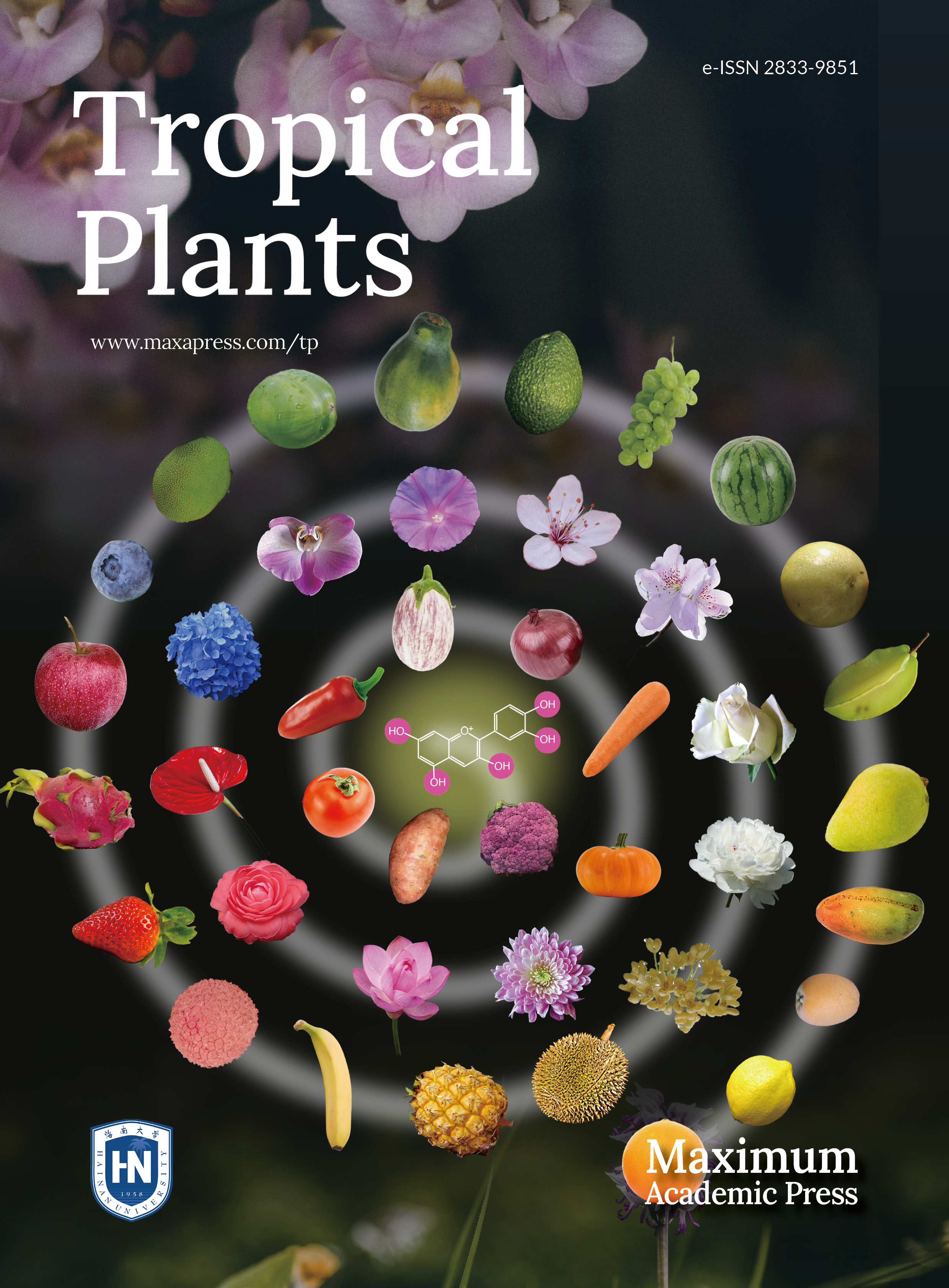-
Besides staple crops such as rice and maize, other tropical crops grown primarily in the tropics, including cassava, sweet potato, sugarcane, papaya, pineapple, and banana, provide important materials for our daily lives and for agro-industrial purposes. The modern breeding of these crops however is hampered by their biological nature and genetic complexity. All of these tropical crops can be, and in some cases must be, propagated vegetatively for traditional cultivation. For example, cassava and sweet potato produce few seeds via flowering and show severe trait segregation in their offspring. Therefore, their vegetative stems or vines are used for traditional cultivation to maintain genetic stability. All edible banana fruits are seedless and are propagated using suckers that grow from lateral buds originating from corms for field cultivation. Papaya and pineapple can be propagated for field cultivation using either vegetative tissue or seeds. Advanced plant tissue culture systems have been developed for all of these tropical crops that enable the commercial production of elite cultivars and virus-free seedlings to promote agricultural development.
The rapid release of the genome sequences of these tropical crops has allowed molecular breeders to apply genome-editing technology to directly target key genes for desirable traits. In the past decade, the genomes of cassava, sweet potato, sugarcane, papaya, pineapple, and banana have been sequenced using next-generation sequencing technologies (Table 1)[1]. However, due to the polyploid nature and genetic heterozygosity of these plants, genome assembly is challenging. Haplotype-resolved genomes have been constructed based on newly developed assembly methods for tropical crops such as sweet potato[2] and sugarcane[3]. CRISPR/Cas9-based genome editing has been successfully applied to some tropical crops via Agrobacterium-mediated transformation both for demonstration purposes and for trait improvement (Table 1), such as enhanced disease resistance and shelf life in banana[4] and improved starch composition in cassava and sweet potato[5,6]. Compatible de novo plant regeneration systems are essential to guarantee the production of transgenic plants with edited genes, which has constrained the broad application of this technology. However, recently developed non-tissue-culture methods for producing genome-edited plants might be applicable to tropical crops, such as sweet potato[7].
Table 1. Current progress of genome editing in several tropical crops.
Tropical crops Cassava Sweet potato Papaya Pineapple Bananas Sugarcanes Genome and size 2n = 2x = 36
750 Mbp2n = 6x = 90
2−3 Gbp2n = 2x = 18
372 Mbp2n = 2x = 50
563 Mbp2n = 2x = 22
2n = 3x = 33
2n = 4x = 44
550−600 Mbp2n = 40−170
highly polyploids
and aneuploids
~10 GbpGenome sequenced Yes Yes Yes Yes Yes Yes Transformation availability Yes Yes Yes Yes Yes Yes CRISPR/Cas9 genome editing Yes Yes Yes None Yes Yes CRISPR/Cas9 alternatives None None None None None None Recently improved genetic transformation methods based on enhanced embryogenesis or shoot organogenesis have also been developed to promote the production of genome-edited transgenic plants in a genotype-independent manner. Such improvements include the use of several morphogenic transcription factors that govern meristem division and differentiation, such as Wuschel2 and Baby boom in maize and GROWTH REGULATING FACTORs (GRFs)-GRF-INTERACTING FACTOR (GIF) systems for various monocot and dicot plants[8]. Non-GM (genetically modified) genome-editing approaches in crops have also been explored using versatile tools such as nanoparticle and VIGS (virus-induced gene silencing) systems. However, these technologies have not yet been tested in tropical crops. LEAFY COTYLEDON (LEC) genes have been used to improve the genetic transformation efficiency of cassava[9]. Embryogenic callus derived from young buds is still the major explant for sugarcane and banana transformation, but developing a reproducible protocol for most varieties remains a technical challenge. A similar situation exists for pineapple, whose major bottleneck for genetic transformation is the lack of compatible gene delivery and tissue culture and regeneration systems, since the transformation protocol is strongly dependent on genotype, and regenerated plants have high levels of somaclonal variation.
To tackle these constraints on genome editing in tropical crops, extensive efforts should be focused on developing non-tissue-culture-based transformation systems, such as nanoparticle-assisted direct transgene delivery or VIGS delivery of transgenes, followed by plant regeneration from infected tissues[10]. Taking advantage of plant regeneration from roots, sweet potato could be transformed and edited using Agrobacterium rhizogenes for direct hairy root production[7]. This technique shows huge potential in plant species that are difficult to regenerate de novo from explants during tissue culture, such as tropical crops.
Increasing numbers of reports describe successful genome editing in tropical crops using current approaches based on relatively compatible gene delivery and plant regeneration systems (Table 1). However, novel genome-editing tools, such as base-editing technology, prime editing, large fragment insertions, and CRISPR/Cas9 derivatives, are required to bridge the gap between tropical crops and well-developed model systems. Much effort is still needed to overcome the bottleneck of Agrobacterium-compatible plant regeneration of tropical crops by developing more robust protocols for a broad spectrum of varieties to meet the needs of molecular breeding through gene editing.
HTML
This work was supported by the National Key R&D Program of China (2019YFD1001100 and 2018YFD1000500) and China Agriculture Research System of MOF and MARA (CARS‐11).
-
The author declares that there is no conflict of interest.
-
Received 29 November 2022; Accepted 6 December 2022; Published online 13 December 2022
- Copyright: 2022 by the author(s). Published by Maximum Academic Press on behalf of Hainan University. This article is an open access article distributed under Creative Commons Attribution License (CC BY 4.0), visit https://creativecommons.org/licenses/by/4.0/.
| Zhang P. 2022. Tropical crops enter the era of genome editing. Tropical Plants 1:10 doi: 10.48130/TP-2022-0010 |












